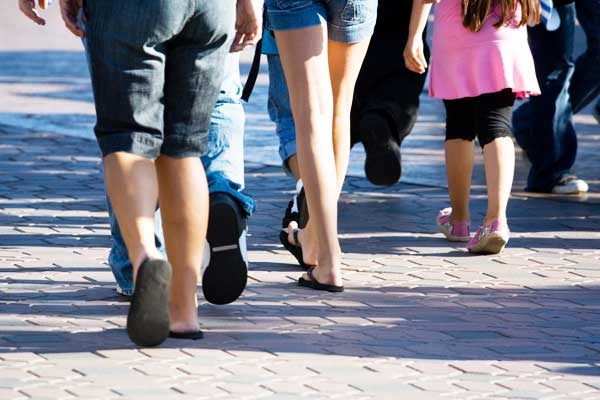Which burns more fat: Walking on an Empty Stomach Vs after a Meal
February 15, 2025 19:31
(Image source from: Canva.com)
Walking is widely recognized as an excellent means of physical activity. It aids in calorie expenditure, alleviates stress, enhances metabolism, and strengthens muscles. Individuals pursuing weight loss often find brisk walking particularly beneficial. While many choose to walk after enjoying substantial meals, some opt for the approach of walking on an empty stomach, believing it may facilitate greater calorie burning. If you've ever found yourself questioning which method is more effective for shedding pounds – walking before meals or afterward – the uncertainty is understandable. Both walking styles contribute to calorie burning and can thus support weight loss, but which is superior?
For those focused on weight reduction, walking without prior food intake is generally recommended. This practice, often referred to as fasting cardio, encourages the body to tap into stored fat for energy since there's no immediate glucose available from recent meals. This could enhance fat oxidation and potentially lead to more significant weight loss. During physical activities like walking or running, muscles utilize sugar in the bloodstream for energy. When blood sugar levels decrease, the liver converts glycogen into glucose to supply the muscles. Even during rest, the liver releases glucose, causing morning glycogen levels to be relatively low. Consequently, exercising while in a fasted state can increase fat utilization for energy. Research from Nottingham Trent University in 2022 indicated that fasting during exercise could lead to a 70 percent increase in fat burning.
Integrating exercise with fasting may offer significant advantages, prompting us to investigate this further over time while identifying ways to simplify the fasting process for individuals. However, if you believe that you can compensate for prolonged hunger by overeating or consuming a diet high in carbohydrates, it’s important to recognize that the benefits of fasting walks may be diminished. Those with medical conditions such as diabetes, hypertension, or other blood-related issues should exercise caution when practicing fasted cardio. Extended periods of fasting coupled with exercise carry risks, including symptoms related to low blood sugar and dehydration, such as dizziness, lightheadedness, shaking, or even fainting.
When carbohydrate levels in the body are insufficient to generate energy, a process known as gluconeogenesis begins, in which protein is converted into energy sources. This can result in a reduction of protein available for muscle repair and growth. Taking a stroll after eating offers numerous health advantages as well. Engaging in post-meal walking utilizes the glucose from your recent food intake for energy purposes. This practice can enhance stamina and overall performance since your body has immediate access to energy. Furthermore, it assists in regulating blood sugar levels, which is particularly crucial for individuals with diabetes or insulin resistance. Although walking after eating does not necessarily increase fat burning more than walking on an empty stomach, a brief 10-15 minute walk can aid digestion and help alleviate bloating.
For effective weight management and to support your health, aim to walk for 30 to 60 minutes each day. It is important to note that weight loss is not exclusively influenced by exercise. Achieving a healthy lifestyle also requires adequate sleep and creating a calorie deficit (which may involve eating fewer calories or increasing physical activity). While walking on an empty stomach may lead to a higher proportion of fat burning, the overall calorie expenditure is more significant.










